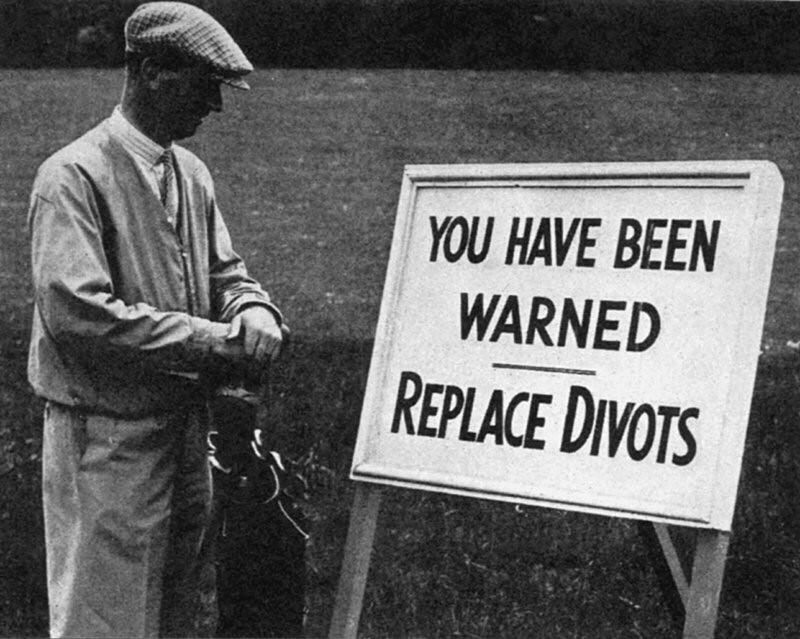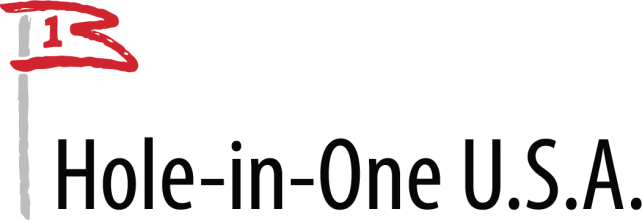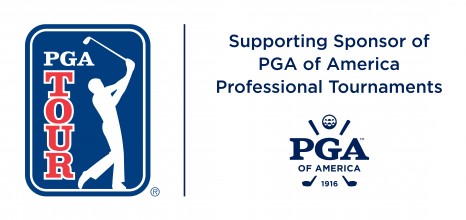
News
The Coomer Corner - Divots! Some Do & Some Don’t

If you are familiar with the name Richard S. Tufts, you are truly an aficionado of the game of golf. If you do not recognize the name, may I introduce you to one of the leading golf entrepreneurs of his time. He and his family were founders and developers of the famous Pinehurst Resort in North Carolina and Richard himself went on to hold the presidency of the United States Golf Association in the 1950’s.
Along with his love for amateur golf and perpetuating the game, he also had a passion when it came to the rules of golf. He wrote and published a small booklet in 1960 titled “The Principles Behind the Rules of Golf”. It covered all the rules, at that time, in a way that the common citizen golfer could understand and use to his own benefit.
He begins the publication with the most important principle of the rules, “Play The Course As You Find It.” The second chapter is dedicated to the next most important principle, “Play The Ball As You Find It.” You will also find his various titles of each subject matter quite interesting as they tell their own stories. How Goes the Battle, When We Do Wrong, The Scales of Justice, In Time of Trouble and many more cover the rules a little differently than the currently published rules of golf booklet. I hope you research this important contribution to the game and perhaps add it to your own library.
Moving ahead to 2023, the purpose of Rule 8 states the very same first principle, “Course Played as It Is Found.”. It goes on to say that the player normally has to accept the conditions affecting the stroke and not improve them before playing their ball. However, a player may take certain reasonable actions even if they improve those conditions, and there are limited circumstances where conditions may be restored without penalty after they have been improved or worsened.
Since many of you are aware of my own history and college affiliation, you can understand my affection for the “CATS.” But do not think this is a promotion for the higher institution of learning in Lexington. It actually refers, this time, to a catch phrase using those letters. Rule 8.1 is titled Player’s Actions That Improve Conditions Affecting The Stroke, or CATS.
In other words, restrictions are in place that do not allow the player to affect his next stroke, and these are determined by the location of the following:
- The lie of the ball at rest,
- The area of the player’s intended stance,
- The area of the player’s intended swing,
- The player’s line of play,
- The relief area where the player will drop or place a ball.
This is a particularly important matter in the eyes of the committee and carries a heavy penalty of two strokes when a violation occurs. There are some opportunities when you can undo a penalty by restoring the conditions that were affected before the next stroke is taken but it takes a special touch and care to achieve these restorations.
The rules also provide a guideline when the ball is affected either accidentally or deliberately by the player or outside influences. Rule 8.2 covers a player’s deliberate action to alter other physical conditions to affect the ball at rest or stroke to be made. Whereas Rule 8.3 describes what happens when a player alters the conditions for another player’s ball.
Taking a quick side-step, there is a long-standing discussion whether it is unfair for a player to be required to hit out of a divot when his ball lands in the fairway. Whether you are for or against giving relief for that situation, you need to ask yourself to what extent that relief would apply. Would the divot need to be a certain depth to qualify and how do you measure that void? Do you also include the rest of the general area, no matter the height of the grass? Is a sand filled divot included in this relief option?
I do not have the answer but I’m sure the discussion will continue. For now, if we play by the rules of golf, the decision has already been made. I hope you never land in a divot. But just in case, you know what to do and what not to do.
For several years now, the rules have included the statement “Care for the Course.” The literal translation means taking actions that improve the physical conditions of an area of the course. Raking a bunker of footprints, replacing divots and fixing ball marks are some samples of what you are allowed to do in caring for the course. Of course, these actions cannot improve an area that would affect your next stroke.
Mr. Tufts completed his first chapter by saying “Of all the basic principles, the playing of the course as you find it is certainly one of the most sacred, and those who violate it can hardly have acquired an understanding or appreciation of the game.”






















































